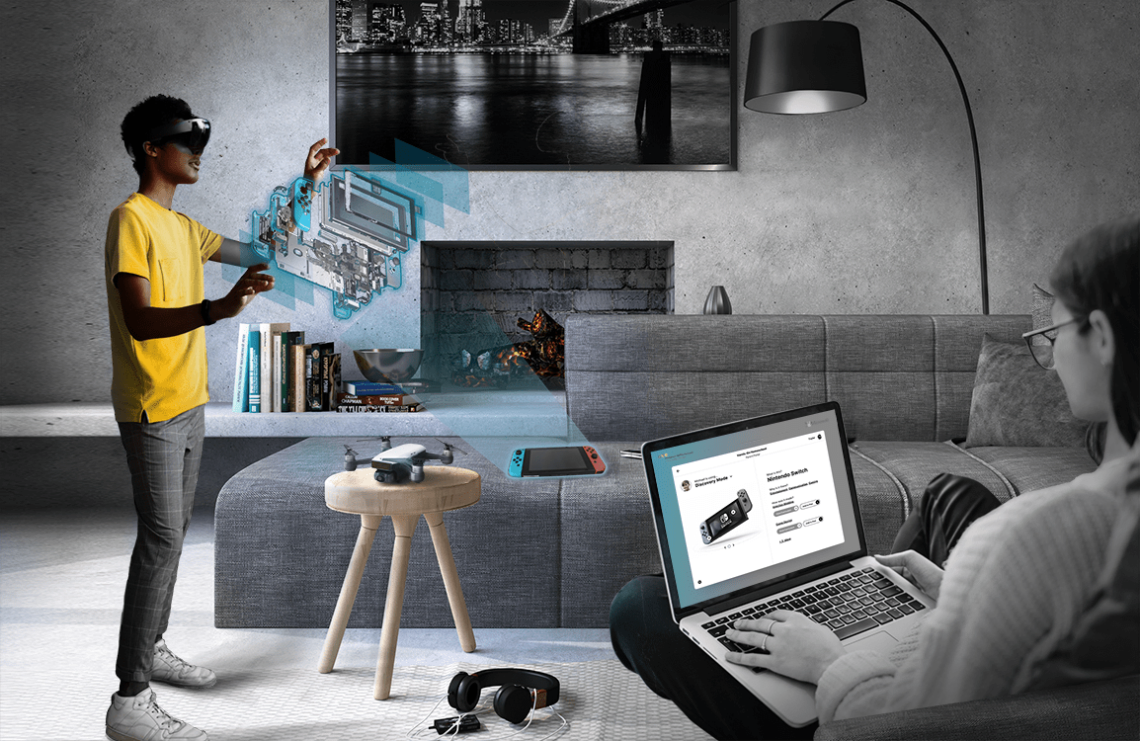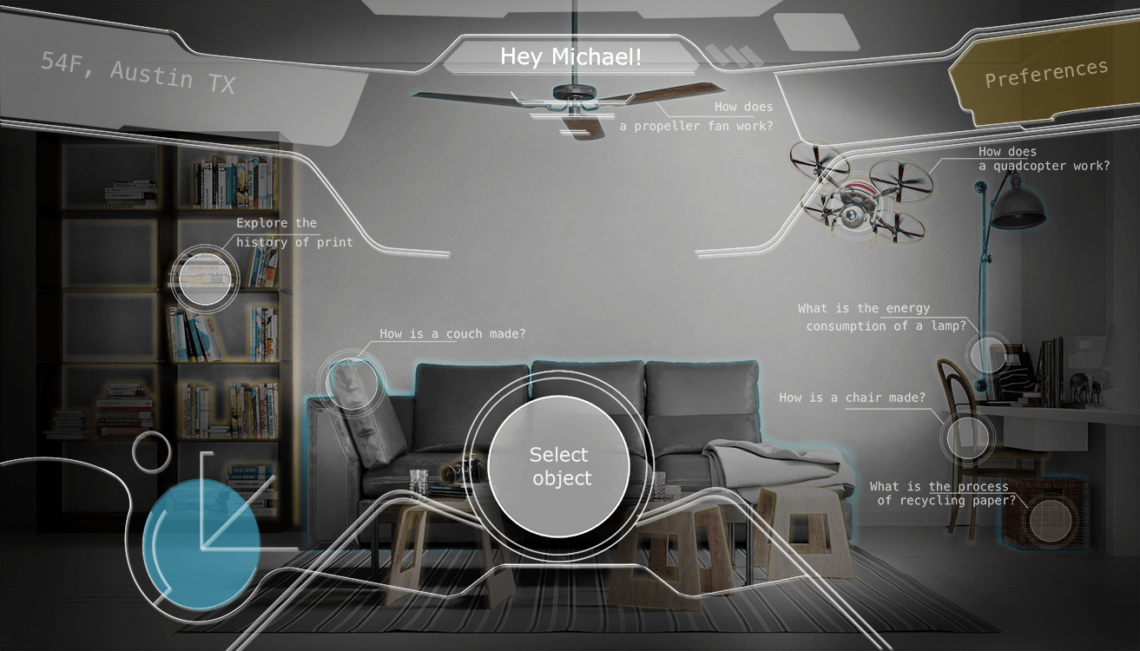
This is from 2021 | 5 minute read
Remote school doesn’t have to be terrible. Here’s how to rethink virtual learning
Throughout history, pandemics have had the secondary effect of accelerating innovation and intellectual progress. With COVID-19 as the trigger, we have been forced to imagine entirely different ways to educate our children. And while the situation may require only temporary stopgaps, the solution may prove superior to the status quo.
One of the big learnings from the COVID-19-induced school shutdowns is that virtual learning, quality education, and career readiness don’t need to be mutually exclusive. The failure of the curriculums that schools adopted early in the pandemic is that they attempted to replicate classroom learning in a remote environment. In order to provide students an equally rich—or even superior—educational experience, we need a curriculum designed specifically for virtual learning—ideally one that utilizes advances in adaptive artificial intelligence to deliver learning experiences that can be customized to students’ diverse learning styles.
This technology already exists. All that’s missing is the vision and partnerships between private-sector technology and education companies, along with a progressive school district willing to implement a pilot program.
Launching off Microsoft’s HoloLens or the Oculus headset, it’s not a far leap to envision an enriched AI-based virtual learning or homeschooling curriculum. In the relatively near future, students could have a dramatically different experience of education, with or without a pandemic.
A better approach to virtual learning
Thinking about these possibilities led our team to explore one such scenario. Based on a hypothetical partnership between a technology company and an education partner, we envisioned a virtual education toolkit and curriculum. For the sake of concepting, we’ve dubbed it Hands-on Homeschool.

Hands-on Homeschool (HOH) is a mixed-reality platform that utilizes adaptive AI technology to customize a curriculum based on the student’s interests and grade level. The HOH technology kit includes a mixed-reality (MR) headset that integrates traditional textbook learning with “magic moments” tied directly to the student’s interests.
For example, a student with an interest in computer science receives a custom curriculum with math content designed to help them learn to code. Another student with an interest in engineering receives a curriculum that integrates math and applied physics.
As the student works through each lesson, the curriculum adapts. The result is a curated educational experience that keeps pace with the student’s individual abilities, while directing them forward toward their vocational goals.

By utilizing existing technologies to create a platform for a virtual education curriculum, we can curate learning opportunities that leapfrog traditional classroom-based educational experiences. Far from leaving students behind, these hybrid technologies and mixed-reality tools propel students forward through exploration and hands-on prep toward future vocations.
Addressing the digital equity gap
Of course, it’s not only the shortcomings of remote learning that the pandemic exposed, but also the inequity of digital access. Many households lack the high-speed broadband and computers required for online education.
A growing number of school districts have begun prioritizing digital learning. Most have high-speed internet in the classroom, and many have invested in take-home devices for students who need them. But even before the pandemic, the emphasis on internet-based curriculum deepened the digital divide, often referred to as the “homework gap,” with an estimated 17% of children unable to complete their homework due to lack of internet access at home. COVID-19 has further exacerbated this divide.
Across the country, local governments and school boards have sought to address this inequity through a combination of community advocacy, school board commitment, philanthropy, and corporate partnerships. Some of these initiatives existed before the pandemic—such as San Jose’s $24 million cross-sector Digital Inclusion Fund—and others were instituted in rapid response to school closures, with telecom and cable providers working together with school districts to provide high-speed internet and Wi-Fi hotspots to students at home.
Here again, it’s neither lack of technology nor even of funding that is the barrier, but simply lack of initiative. In the absence of national, federally funded investment in digital infrastructure, these cross-sector partnerships offer the greatest potential for closing the digital divide and making education equitable.
A better approach to stem teaching
Beyond the immediate education crisis brought about by the pandemic, the preexisting and longer-term concern is that even traditional classroom learning is failing our students when it comes to developing STEM skills, vocational preparedness, and achievement equity across socioeconomic groups.
Teachers struggle with making connections across disciplines and with introducing real-world applications. And that’s understandable. Most lack the advanced cross-discipline expertise to feel confident teaching an integrated curriculum, and few schools have the resources to provide exposure to hands-on, real-world applications.
The U.S. ranks near the bottom of industrialized countries in math and science scores, and only 20% of U.S. high school graduates are prepared for college-level coursework in STEM majors. But that 20% isn’t evenly distributed. Children in high-poverty schools receive a significantly inferior education, especially in STEM-related disciplines.
There are a number of factors that contribute to this, including a lack of resources, particularly in the lowest-income schools. But perhaps most fundamentally, high school students struggle to learn math and science because the concepts are abstract, the textbooks are static, and the material has no relation to their interests or real-world applications. The traditional approach to teaching discrete subjects through conceptual instruction simply isn’t effective for STEM learning.
When it comes to equipping students with advanced STEM knowledge and skills, our approach to teaching needs to be redesigned to incorporate two key principles:
1. Real-world application is fundamental to STEM.
2. STEM learning needs to be integrated across disciplines to be meaningful.
The HOH concept started with a prototype for a homeschool scenario, but the application has relevance for classroom and hybrid education settings as well. By providing each student with an AI-based personalized lesson plan and learning graph, the teacher’s role shifts to that of a guide, while the adaptive AI delivers a programmed curriculum interspersed with real-world applications.
From a cost standpoint, using technology to deliver enhanced curricula is orders of magnitude less expensive than the advanced training that teachers will need to receive to stay on pace with the rapidly evolving needs of the future workforce. And from an equity perspective, standardizing STEM teaching through technology to augment classroom instruction will go far farther to bridge the achievement gap in the long term than any of our current stopgap measures.
It’s only a matter of time before adaptive AI and MR/VR technology become part of every student’s education experience. It could be a lot sooner than you imagine.